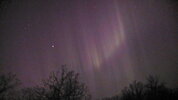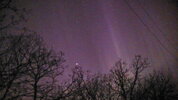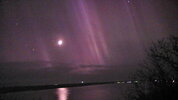The 'northern' lights were apparently seen as far south as the northern coastline of the Yucatan peninsula in Mexico:
...and there's a rumor that they were seen in Jamaica, which is a little further south, at 18 degrees North. Confirmation of their appearance in the Yucatan from a local news report
here.
When checking for reports about this, I found
an article from The Atlantic about the Northern Lights being seen in Jamaica. At first I thought I was reading a contemporary report, but it is actually from December
1859. Here's an excerpt from that detailed report:
The aurora borealis of August 28th was surpassingly brilliant not only in the northern portion of this continent, but also as far south as the equator, — as well as in Cuba, Jamaica, California, and the greater portion of Europe. [...]
In Jamaica the aurora borealis was witnessed for the first time, perhaps, since the discovery of this island by Columbus. So rare is the phenomenon in those latitudes, that it was taken for the glare of a fire, and was associated with the recent riots.
The riots in question were probably the 1859 Toll Gate Riots of Jamaica, a rebellion against high taxes. And the aurora borealis seen at the time probably refers to
the Carrington Event, the strongest-ever geomagnetic storm (in the modern era anyway), and which took place from 28 August to 2 September 1859.
So, is the recent celestial display not the strongest geomagnetic storm in two decades, but in two
centuries? Perhaps not in terms of damage caused, but maybe in terms of how far south it was seen.
Here's the full 1859
Atlantic report
in PDF format, which describes in detail the lights people witnessed, and the geomagnetic's storms effects on the telegraph system, and other attendant phenomena like high concentrations of cirrus cloud formation preceding the event, and peculiar sounds heard during it, and also attempts to scientifically explain the lights. We now know that they are
both a solar and a planetary/atmospheric phenomenon, but it's interesting to see them trying to figure all that out in the mid-19th century.







